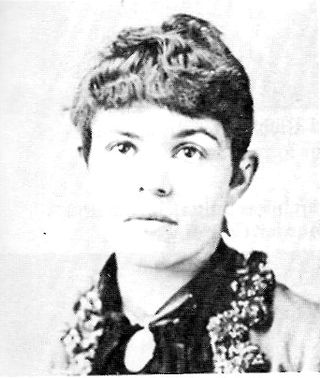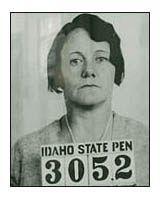
Arthur Edward Waite was a British poet and scholarly mystic who wrote extensively on occult and esoteric matters, and was the co-creator of the Rider–Waite tarot deck. As his biographer R. A. Gilbert described him, "Waite's name has survived because he was the first to attempt a systematic study of the history of Western occultism—viewed as a spiritual tradition rather than as aspects of protoscience or as the pathology of religion."

Strong Poison is a 1930 mystery novel by Dorothy L. Sayers, her fifth featuring Lord Peter Wimsey and the first in which Harriet Vane appears.

The Diocese of Grand Rapids is a Latin Church diocese of the Catholic Church in western Michigan in the United States. It comprises 80 parishes in 11 counties. It is a suffragan see to the Archdiocese of Detroit. The mother church of the diocese is the Cathedral of Saint Andrew in Grand Rapids. On April 18, 2013, Pope Francis appointed David J. Walkowiak to be the twelfth bishop of Grand Rapids.

The Pimlico Mystery or the Pimlico Poisoning Mystery is the name given to the circumstances surrounding the 1886 death of Thomas Edwin Bartlett, possibly at the hands of his wife, Adelaide Blanche Bartlett, in the Pimlico district of London. A fatal quantity of chloroform was found in Mr Bartlett's stomach, despite having not caused any damage to his throat or windpipe, and no evidence of how it got there. Adelaide Bartlett was tried for her husband's murder and was acquitted. By the jury's own statement in court Mrs Bartlett's acquittal was partly secured because the prosecution could not prove how Mrs Bartlett could have committed the crime.

Henry Hawkins, 1st Baron Brampton,, known as Sir Henry Hawkins between 1876 and 1899, was an English judge. He served as a Judge of the High Court of Justice between 1876 and 1898. R. F. V. Heuston described him as "probably the worst judge on the English Bench in the nineteenth century."

Amy Duggan "Sister" Archer-Gilligan was a nursing home proprietor and serial killer from Windsor, Connecticut. She murdered at least five people by poisoning them. One of her victims was her second husband, Michael Gilligan; the others were residents of her nursing home.

Mary Ann Cotton was an English convicted murderer who was executed for poisoning her stepson. Despite her sole conviction for murder, she is believed to have been a serial killer who killed many others including 11 of her 13 children and three of her four husbands for their life insurance policies. Her preferred method of killing was poisoning with arsenic.

Margaret Julia Mitchell was an American actress, born in New York City. She made her speaking debut as Julia in The Soldier's Daughter at the Chambers Street Theatre in 1851. The parts in which she earned the greatest fame were Jane Eyre, Mignon, Little Barefoot, and Fanchon the Cricket.

Charles Carter Comstock was a businessman and politician from the US state of Michigan.

Edwin Forrest Sweet was an American politician from the U.S. state of Michigan.

Lyda Southard, also known as Lyda Anna Mae Trueblood, was an American female suspected serial killer. It was suspected that she had killed four of her husbands, a brother-in-law, and her daughter by using arsenic poisoning derived from flypaper in order to obtain life insurance money.

Sophie Charlotte Elisabeth Ursinus was a German serial killer believed to have been responsible for poisoning her husband, aunt, and lover, and of attempting to poison her servant. Her trial led to a method of identifying arsenic poisoning.

On 17 June 1919, Mabel Greenwood (née Bowater) died in the company of her husband Harold Greenwood an English solicitor. Greenwood was accused and acquitted of murdering his wife by arsenic poisoning. He was tried at Carmarthen Assizes in 1920 and defended by Edward Marshall Hall; his case is a rare example of a legal professional being charged with murder.
Martha Wise was an American poisoner and serial killer. After her husband died and her family forced her to end a relationship with a new lover, Wise retaliated by poisoning seventeen family members, of whom three died, in 1924. She was convicted of one of the murders, despite defense claims that she was mentally ill and that her lover had ordered her to poison her family. The case is considered one of the most sensational of the era in Ohio, where it occurred.

Lydia Sherman, née Danbury, also known as The Derby Poisoner, was an American serial killer. She poisoned eight children in her care and her three husbands and was convicted of second-degree murder in 1872. Five years into her sentence, she escaped under the pretext of being sick and got a job as housekeeper to a rich widower in Providence. She was caught and imprisoned again before dying in Wethersfield State Prison on May 16, 1878, from cancer.
Clara Elenore Carl was an American writer and repeat murderer. In 1922, she was convicted of having poisoned her second husband, Frank Emmerson Carl, and his father, Alonzo Carl. She was sentenced to life imprisonment but paroled after 15 years. During her time in prison she escaped once and evaded recapture for a week. It is suspected that she killed her first husband, Robert Gibson, as well. She was "considered one of the most daring woman criminals in the country," earning the nickname "feminine Bluebeard."
Northam Warren created the formula for Cutex Cuticle Remover.
Hannah Hanson Kinney was an American seamstress who was charged with the murder of her third husband, George Kinney in 1840. Arsenic, the alleged murder weapon, was found in Kinney's stomach during an autopsy. Though Kinney was acquitted, public records indicate that Kinney's second husband, Reverend Enoch W. Freeman, and Freeman's father, died of arsenic poisoning years earlier. Public consensus following Kinney's trial deemed her guilty, and she published an autobiography in 1841 to defend herself.

Charles Michael Albanese was an American serial killer who poisoned three relatives with arsenic in McHenry, Illinois, from 1980 to 1981, in order to obtain their inheritance, bank funds, real estate, life insurance payouts and pension proceeds. He was sentenced to death in two separate trials and ultimately executed in 1995.
Edward Alden Jewell was an American newspaper and magazine editor, art critic and novelist. He was the New York Times art editor from July 1936 until his death.


















